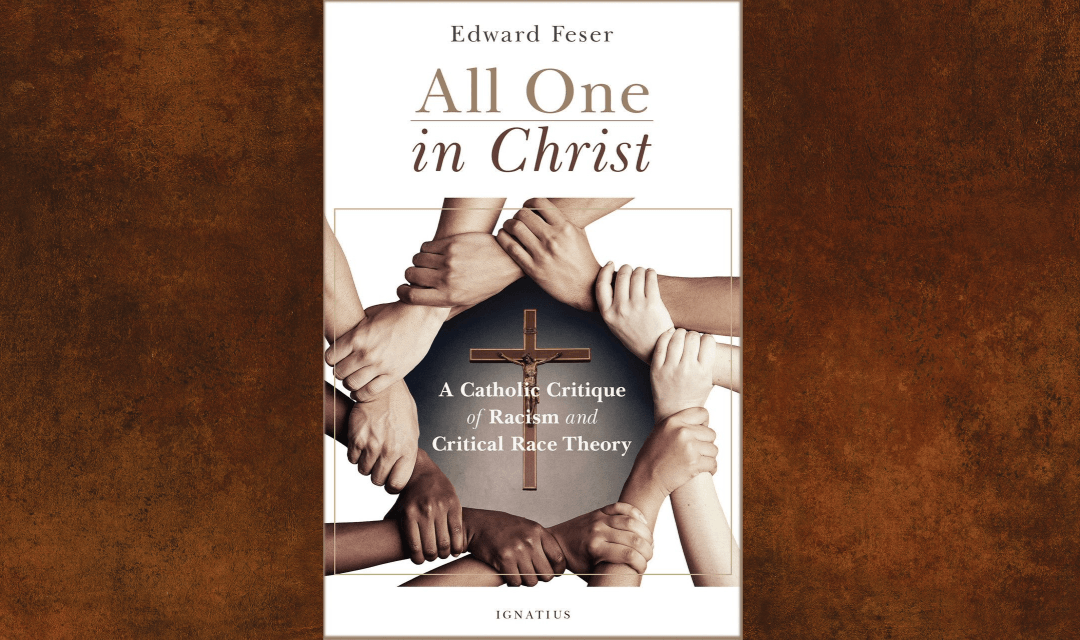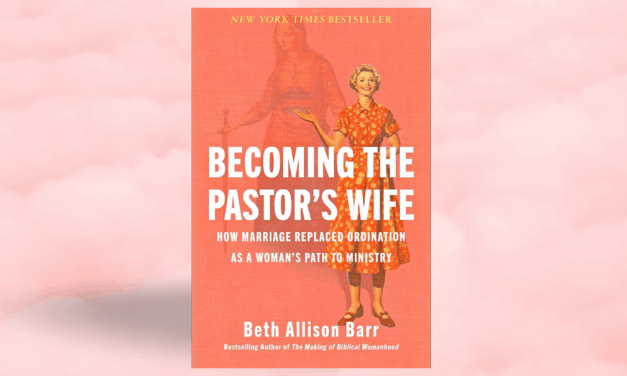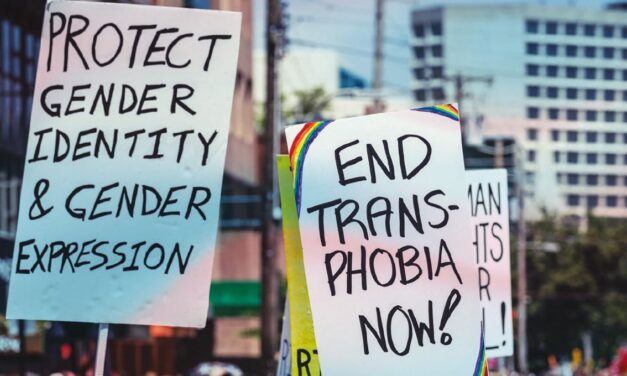Cultural Critique Column
This article was published exclusively online in the Christian Research Journal, volume 48, number 01 (2025).
When you support the Journal, you join the team and help provide the resources at equip.org that minister to people worldwide. These resources include our ever-growing database of more than 2,000 articles, as well as our free Postmodern Realities podcast.
Another way you can support our online articles is by leaving us a tip. A tip is just a small amount, like $3, $5, or $10, which is the cost of a latte, lunch out, or coffee drink. To leave a tip, click here
All One in Christ: A Catholic Critique of Racism and Critical Race Theory
by Edward Feser
(Ignatius Press, 2022)
A Study in Sound Reasoning
Edward Feser is a prolific Roman Catholic philosopher and defender of natural theology and natural law and is Professor of Philosophy at Pasadena City College. He has ably defended arguments for the existence of God in his Five Proofs for the Existence of God (Ignatius Press, 2017) and writes within the Thomist tradition. In All One in Christ: A Catholic Critique of Racism and Critical Race Theory (Ignatius Press, 2022), he evaluates racism and Critical Race Theory (CRT) according to the Catholic moral tradition. Feser shows that CRT, a far-left, neo-Marxist racial ideology, commits many logical fallacies, is not consonant with the best social science work on race, and is profoundly unbiblical. Having written on CRT, I was happy to find a Catholic compatriot in critique.1
Roman Catholic Moral Teaching. Why might an evangelical be interested in Roman Catholic moral teaching? First, it is significant for us to understand the moral thinking of our Catholic friends, family members, and neighbors. Second, Catholic moral teaching is often in agreement with basic evangelical thought, and it sometimes develops moral themes in more depth than evangelicals have done, especially on sexual ethics and the theology of the body. Unlike Protestants, Catholics believe that the teaching authority of the Church is necessary for the understanding of Scripture. Thus, Catholics deny the Reformation doctrine of sola Scriptura. Nevertheless, since Catholics take the Bible to be divinely inspired, official teachings by the Church on social issues may be insightful. As an evangelical, I found myself in near total agreement with what Feser presents as Catholic moral teaching on race and society. While, as a Protestant, I accept neither the office nor the authority of the pope, the papal pronouncements that Feser quotes or cites are biblical and logical, as are other references to authoritative sources, such as the Catechism of the Catholic Church. If Feser were citing statements about the doctrine of salvation, I would be less likely to agree.2
Laying the Foundation. Professor Feser’s first three chapters take up the Church’s teachings against racism (chapter one), the views of late scholastic and early modern popes against slavery (chapter two), and the rights and duties of nations and immigrants (chapter three). This historical-theological prologue is significant since many secular critics of Christianity claim the Bible and/or Christian teaching has not affirmed the value of all people made in the image of God or has supported slavery. Feser notes that “the Church’s condemnation of racism is grounded in considerations about human nature that go deeper than anything that could be either discovered or undermined by biological science” (p. 11). Feser quotes The Second Vatican Council’s pastoral constitution, Guadium et Spes: “Since all men possess a rational soul and are created in God’s likeness, since they have the same nature and origin, have been redeemed by Christ and enjoy the same divine calling and destiny, the basic equality of all must receive increasingly greater recognition” (15). This statement represents the biblical teaching, and it can be supported by only the Christian worldview. Thus, all racism and slavery is forbidden. The atheist Yuval Noah Harari, author of Sapiens, realized this.
However, if we do not believe in the Christian myths about God, creation and souls, what does it mean that all people are “equal”? Evolution is based on difference, not on equality. Every person carries a somewhat different genetic code, and is exposed from birth to different environmental influences. This leads to the development of different qualities that carry with them different chances of survival. “Created equal” should therefore be translated into “evolved differently.”3
For those who follow Harari, the doctrines of universal human rights and the equality of all before the law must be discarded. Certainly, both the Catholic and the Protestant traditions — when true to Scripture — give us a bulwark for human dignity and equal respect for all human beings. More than that, they give us a firm foundation to oppose CRT, as Feser demonstrates.
Chapter three addresses the Catholic Church’s teachings on the rights and duties of nations and immigrants, the essence of which is that nations have a divine right to exist and should be welcoming to legal immigrants. However, nations have no duty to incorporate all those who want to immigrate, since this could break down the nation’s fundamental identity. Feser summarizes: “The Church’s teaching on patriotism and on the nation as a natural institution is in no way a concession to nationalism, racism, or xenophobia but precisely a corrective to them. It is the sober middle ground between these errors on the one hand, and the excessive individualism and globalism that tend to dissolve national loyalties on the other” (51, emphasis in original).
Critical Race Theory. Having laid this foundation of human nature, human equality, and the role of nations in light of ethnic diversity, Feser is ready to explain CRT in chapter four. He writes, “Because CRT is energetically promoted in the name of ‘antiracism,’ many suppose that it must be benign. This is as naïve as thinking that Marxism must be benign given that it presents itself as an ally of the working class. In fact, Marxism has only ever yielded an oppression even worse than the kind it claims to eradicate” (54). He goes on to show that “CRT actually promotes a novel and insidious form of racism. Like Marxism, CRT is a grave perversion of the good cause it claims to represent, and it is utterly incompatible with Catholic social teaching” (54).
But what does CRT teach? CRT teaches that racism against people of color permeates every aspect of society. As CRT guru Robin DiAngelo states, “No aspect of society is outside of…the forces of racism” (54).4 Racism, for CRT, is not the overt hatred of Whites for Blacks (as evidenced by the KKK, for example) but is found primarily in a system that rigs everything about non-Whites. Hence the idea of “systemic racism.” This means “white supremacy,” in which all Whites benefit from unearned “white privilege.” All Whites have an implicit bias against non-Whites, denials to the contrary. They engage in “micro-aggressions” against non-Whites through their language and customs.
All discrepancies of achievement between Whites and non-Whites are attributed to racism. The answer, for Ibram X. Kendi, is corrective discrimination: “The only remedy to racist discrimination is antiracist discrimination. The only remedy to past discrimination is present discrimination. The only remedy to present discrimination is future discrimination” (63).5 Feser notes that readers “might be shocked” by this radical proposal (64) since it differs entirely from the classical view of “liberalism, which, traditionally, insists on respecting rights to free speech, nondiscrimination, judging people as individuals rather than on the basis of group membership, and rational persuasion and legal reform rather than coercion” (65). But true to its Marxist origins, CRT rejects these ideas “as insufficiently radical and, indeed, as reactionary” (65). The entire civil rights vision must be deemed a failure and swept aside in favor of CRT. One’s race is taken as more important than one’s personhood since race is the defining quality of human beings. Kendi and other CRT ideologues want to penalize Whites simply because they are Whites, which is racist.
Kendi, who is never afraid of pushing his ideas into the bright light of absurdity, claims that the advocation for a “‘race-neutral’ society” is “the most threatening racist movement” (66).6 Moreover, according to Kendi, “it is impossible to be objective” (66),7 and “cultural relativity [is] the essence of cultural antiracism” (66).8 It follows, then, that rational persuasion is impossible in this high-stakes and highly racialized setting. The antiracist movement, rather, craves “power to shape policy” (67).9 Although Feser does not mention this, comments like this are reminiscent of Mao Zedong’s statement that “political power grows out of the barrel of a gun.”10 One can easily understand how CRT drove much of the violent rioting of 2020.
CRT also claims that traditional Judeo-Christian views of sexual identity and ethics result in systems of oppression against the LGBTQ world. Kendi claims that “we cannot be antiracist if we are homophobic or transphobic,” so we must view “religious-freedom laws…as taking away the rights of queer people’” (68).11 Moreover, capitalism and racism are joined at the hip, and both must be destroyed in tandem, according to CRT.
The Illogic of CRT. In an act of commendable self-control, Feser holds back on substantial criticisms of CRT until chapter five, “Philosophical Problems with Critical Race Theory.” I was eager to read this since I had written an article called “Critical Race Theory in Six Logical Fallacies” in Academic Questions.12 Feser found a few that I missed. He begins by noting that “CRT is essentially a reformulation of some of the main themes of Marxism and postmodernism in racial terms” (72). Instead of centering analysis on economic class relations wherein the workers are exploited by the owners, as does Marxism, CRT takes people of color as the ones oppressed by White people. While postmodernism takes all truth claims to be culturally relative and based on power interests, CRT places the blame on “white supremacy.”
Like Marxism and postmodernism, CRT is a philosophical position, even though it (wrongly) claims support from social science, as we will see. But Feser notes that “one of the most striking things about the work of CRT writers is the extremely poor quality of its argumentation and analysis” (74). There is far more bluster than logic. The philosophically trained reader will discern “its relentless, indeed shameless, commission of a variety of textbook logical fallacies” (74). For example, DiAngelo says that if one attributes racial inequities to anything but racism, that shows the one making the claim is racist (74).13 Kendi routinely does the same (74). 14 But this commits the circumstantial ad hominem fallacy, “which involves rejecting a claim or argument simply because of some alleged vested interest on the part of the person advocating it” (75). The vested interest may or may not corrupt the person’s judgment. CRT ideologues are also masters of the poisoning the well logical fallacy, which involves discounting what is claimed based on some supposed flaws in the one making the claim. When DiAngelo rejects all critiques of her views as evidence of “white fragility” (74–75),15 supposed “psychological condition” that corrupts judgment, “she is committing a textbook example of the fallacy of poisoning the well” (77).
This chapter is an embarrassment of riches for those who care about sound reasoning. I will mention a couple more fallacies. CRT writers are masters of fallacies of presumption, a species of which is called begging the question or circular reasoning. When one begs the question, one is guilty of “arguing for a claim in a way that simply presupposes the claim, rather than offering any independent reasons for believing it” (79, emphasis in original). DiAngelo basically admits to committing the fallacy when she writes, “Whiteness Studies begin with the premise that racism and white privilege exist in both traditional and modern forms, and rather than work to prove its existence, work to reveal it” (80).16 If one holds this view, then counterevidence can be summarily dismissed, and the view becomes unfalsifiable — which is no virtue for a social science theory. CRT thinkers also commit the fallacy of special pleading with alacrity and without shame. This fallacy “involves applying an arbitrary or unjustified double standard” (81). That is, one cannot assert a general principle and then make arbitrary exceptions to it simply because one wants to. CRT theories, having been influenced by the likes of Foucault and Gramsci, employ “the hermeneutics of suspicion,” in which claims are taken to be mere masks for power grabs. “Objectivity and race-neutrality are illusions,” we are told by CRT advocates. But CRT advocates never apply this suspicion to themselves, since that would mean that they, too, are deconstructed by their own interests and power strategies. Kendi does this when he says that there is no such thing as objective reality, only subjective understanding. But he must exempt himself from that view to claim anything about objective reality (66). There is more, but I am running out of words.
Feser shows in chapter six, “Social Scientific Objections to Critical Race Theory,” that when CRT writers bother to consult social science for their conclusions, they fail miserably, typically begging the question. Drawing on the work of economist and historian Thomas Sowell and others, Feser argues that racial disparities are caused by many factors other than racism, such as personal values and the stability of the traditional family. These are common-sense observations; but CRT is against logic, common sense, and social science.
Feser concludes this short but sharp and important book with the chapter, “Catholicism verses Critical Race Theory.” Since the Roman Catholic Church has already rejected Marxism, it must reject CRT for similar reasons. Humanity should not be divided into opposing groups, either economic or racial. The answer to injustice is not more injustice through false and damaging worldviews, but an application of the biblical teaching on the unity of humanity and the objectivity of truth and justice. Given Professor Feser’s cogent arguments, the reader should conclude that all Christians should reject CRT and find a better way forward. —Douglas Groothuis
Douglas Groothuis, PhD, is Distinguished University Research Professor of Apologetics and Christian Worldview at Cornerstone University. He is the author of Christian Apologetics, 2nd ed. (IVP Academic, 2022) and, most recently, Beyond the Wager: The Christian Brilliance of Blaise Pascal (IVP Academic, 2024).
Notes:
- Douglas R. Groothuis, Fire in the Streets: How You Can Confidently Respond to Incendiary Cultural Topics (Washington, DC: Salem Books, 2022).
- A classic critique of Roman Catholicism from a conservative Protestant perspective is Lorraine Boettner, Roman Catholicism (1962; Phillipsburg, NJ: P&R Publishing, 1985).
- Yuval Noah Harari, Sapiens: A Brief History of Humankind (New York: HarperCollins, 2015), 109.
- Feser cites Robin DiAngelo, White Fragility: Why It’s So Hard for White People to Talk about Racism (Boston: Beacon Press, 2018), 13.
- Feser cites Ibram X. Kendi, How to Be an Antiracist (New York: One World, 2019), 19.
- Feser cites Kendi, How to Be an Antiracist, 20.
- Feser cites Kendi, How to Be an Antiracist, 167.
- Feser cites Kendi, How to Be an Antiracist, 91.
- Feser cites Kendi, How to Be an Antiracist, 214.
- Mao Zedong, spoken at the Sixth Plenary Session of the Sixth CPC Central Committee on the “Problems of War and Strategy,” November 6, 1938, quoted in Li Kwok Sing, A Glossary of Political Terms of the People’s Republic of China, trans. Mary Lok (Shatin, NT, Hong Kong: Chinese University Press, 1995), 325–26, Google Books, https://www.google.com/books/edition/A_Glossary_of_Political_Terms_of_the_Peo/J5QbQpQTegwC?hl=en&gbpv=1&bsq=political%20power%20grows%20out%20of%20the%20barrel%20of%20a%20gun.
- Feser cites Kendi, How to Be an Antiracist, 197.
- Douglas Groothuis, “Critical Race Theory in Six Logical Fallacies,” Academic Questions (Summer 2022), National Association of Scholars, https://www.nas.org/academic-questions/35/2/critical-race-theory-in-six-logical-fallacies.
- Feser cites DiAngelo, White Fragility, 2.
- Feser cites Kendi, How to Be an Antiracist, 90, 153–54.
- Feser cites DiAngelo, White Fragility, 2.
- Feser cites Robin DiAngelo, “White Fragility,” International Journal of Critical Pedagogy 3 (2018): 56.









